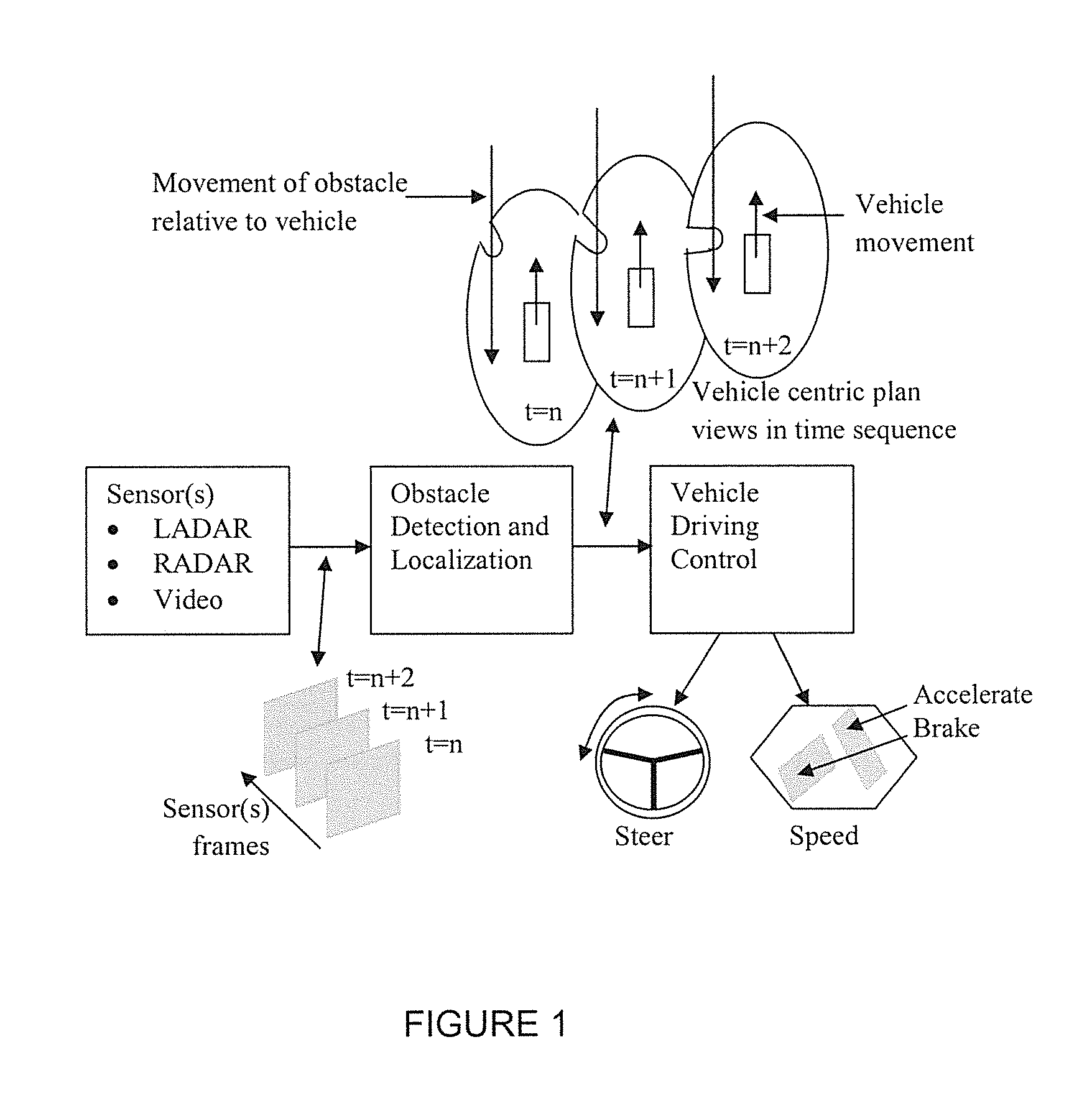All weather autonomously driven vehicles
- Summary
- Abstract
- Description
- Claims
- Application Information
AI Technical Summary
Benefits of technology
Problems solved by technology
Method used
Image
Examples
Embodiment Construction
[0033]An autonomous driving system requires five basic capabilities:
[0034](1) It has to know where things are and where it needs to go. This is typically provided in the form of a road or mission map (“map” for short) and checkpoints defining destinations (locations defined in the world on the map). The autonomy software plans routes from starting points to checkpoints through roads (legal mapped paths, represented as a list of way points) or zones (defined as areas through which any path can be taken that does not collide with an obstacle);
[0035](2) It has to be capable of sensing where it is reliably in the environment (location in a driving lane, location along a road, location in the world, location relative to the map);
[0036](3) It has to be able to sense and locate (relative to itself) objects to which it must react. These include impassible obstacles not already known from inclusion in the map (paths blocked, zones disallowed for driving, fallen trees, etc.), Also dynamic obj...
PUM
 Login to View More
Login to View More Abstract
Description
Claims
Application Information
 Login to View More
Login to View More - R&D
- Intellectual Property
- Life Sciences
- Materials
- Tech Scout
- Unparalleled Data Quality
- Higher Quality Content
- 60% Fewer Hallucinations
Browse by: Latest US Patents, China's latest patents, Technical Efficacy Thesaurus, Application Domain, Technology Topic, Popular Technical Reports.
© 2025 PatSnap. All rights reserved.Legal|Privacy policy|Modern Slavery Act Transparency Statement|Sitemap|About US| Contact US: help@patsnap.com



